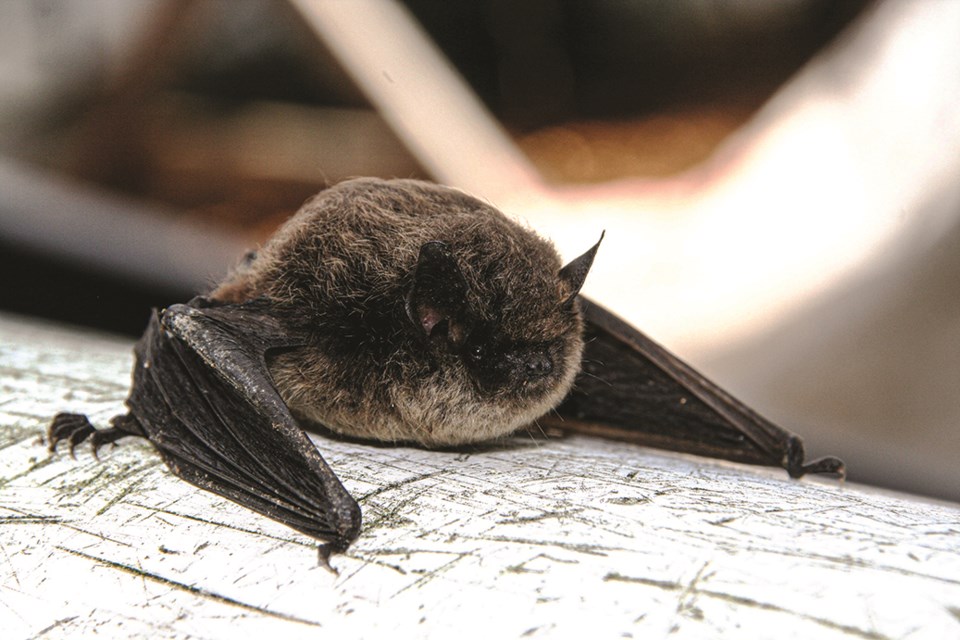Are you noticing more bats around your house or property? You are not alone! Mid-summer is the time when landowners typically notice more bat activity, may have bats flying into their house, and occasionally find a bat on the ground or roosting in unusual locations.
These surprise visitors are often the young pups. In July and August, pups are learning to fly, and their early efforts lead them to locations closer to humans. If you find a live bat indoors, open exterior doors and windows, and close interior doors until the bat leaves.
Remember to never touch a bat with bare hands. Rabies exists at low levels in B.C. bat populations, so it is important to avoid any contact. If you must move a bat, wear leather gloves and gently transport the bat using a trowel or box. If you suspect a bite or scratch, immediately wash the area with soap and water for 15 minutes, contact public health or your doctor as soon as possible, or go to the emergency department.
To report bat sightings or known bat roosts, or to request information on safely moving a bat, living with bats, or excluding bats from a building, please contact the Sunshine Coast Wildlife Project at [email protected] or 604-989-1007. Local bat stewardship efforts are funded by the Habitat Stewardship Program, Habitat Conservation Trust Foundation, Forest Enhancement Society of BC, and the Province of BC. For more information, please visit bcbats.ca or coastwildlife.ca.



